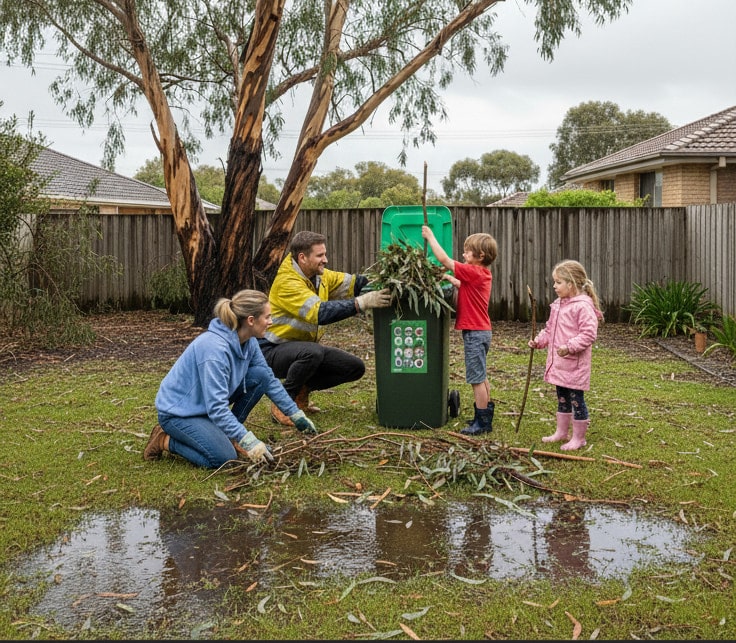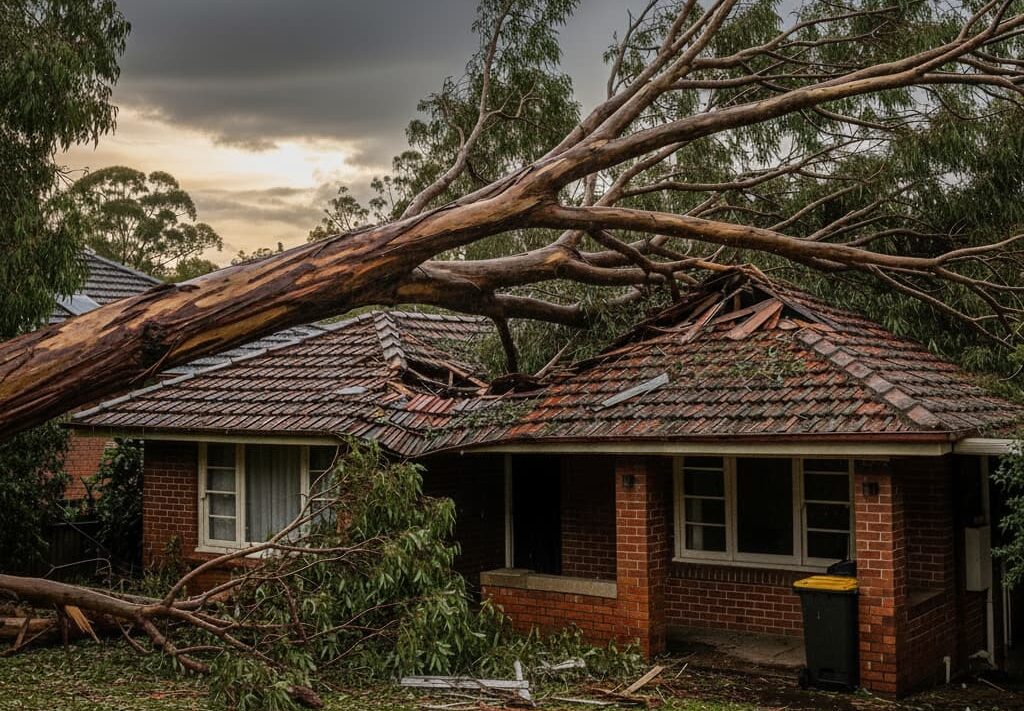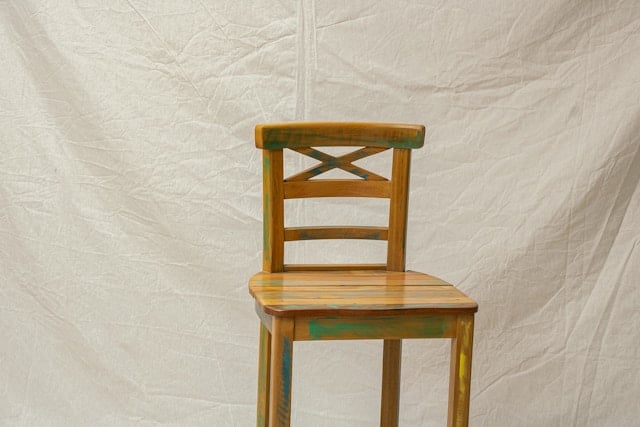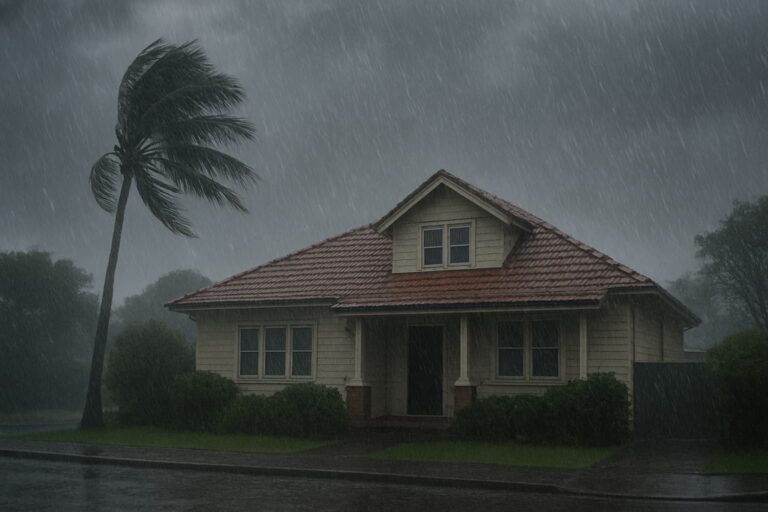If you caught part one on readying your home for rain, you’ll remember we focused on the basics every Sydney homeowner should know, from the essential prevention steps to emergency response strategies that form the foundation of any effective storm protection plan.
Now we’re looking into the Sydney-specific considerations that can make or break your waterproofing strategy longer term. Living in Sydney brings unique challenges – from our increasingly intense weather patterns to complex council regulations and diverse housing stock. Understanding these local factors is crucial for making smart, long-term protection decisions.
Sydney-Specific Considerations
Living in Sydney brings unique challenges that homeowners in other cities don’t face. Understanding these local factors helps you make better decisions about protecting your home.
Local Weather Challenges
Sydney’s weather is becoming more unpredictable each year. We’re seeing more intense storm cells that dump enormous amounts of rain in very short periods. The old rule of thumb about gutters handling 100mm per hour isn’t really enough anymore.
Our coastal location means humidity stays high even after storms pass. This creates perfect conditions for mould and can slow down the drying process after water damage. Factor this into your waterproofing decisions – materials need to cope with ongoing moisture, not just the initial rainfall.
Temperature swings in Sydney can be extreme. Materials expand and contract with these changes, which is why sealants and joins often fail over time faster than they might elsewhere in Aussie. Because of this, you’ll need to make sure to choose waterproofing products designed for Australian conditions rather than generic options.
If you’re in a bushfire-prone area, your storm preparation needs to consider ember protection too. Some waterproofing materials can actually increase fire risk, so get professional advice if you’re in a high-risk zone.
Council Requirements and Regulations
Before you start major waterproofing projects, understand these key Sydney requirements:
- Council permits – most drainage work needs approval, requirements vary by area
- Stormwater compliance – Sydney Water has specific guidelines for water management
- Heritage restrictions – areas like The Rocks, Paddington have strict building rules
- Strata responsibilities – apartment waterproofing usually needs body corporate approval
- Building code compliance – waterproofing must meet current Australian standards
- Neighbour considerations – drainage changes can affect adjoining properties
Each Sydney council has different rules about drainage and building work. Stormwater drainage often has specific requirements, and some councils require retention systems for new developments. If you’re upgrading your drainage, make sure you comply with local rules.
Heritage homes in areas like The Rocks, Paddington, or Leichhardt often have restrictions on what changes you can make. Even seemingly simple work like replacing roof tiles might need approval if your home is heritage listed.
Apartment buildings have strata responsibilities for waterproofing. If you’re in a unit, major balcony or external wall work usually needs strata approval and should be coordinated with building maintenance.
Finding Help in Sydney
When you need professional help, choosing the right contractor is crucial. In NSW, waterproofing contractors need proper licensing. Always check that any contractor you hire has current licenses and insurance.
Get multiple quotes for any significant work. Prices can vary widely across Sydney, and the cheapest option isn’t always the best value. Ask for references from recent local jobs and check online reviews.
Be wary of door-to-door contractors, especially after storms. Legitimate professionals rarely work this way, and you’ll often get better service from established local businesses.
For emergencies during storms, the SES (Phone 132 500) provides free assistance for storm damage. They can help with temporary roof repairs and making your home safe until professional repairs can be organised.
Insurance and Financial Protection
Understanding your insurance coverage before you need it can save you significant stress and money when problems occur.
Understanding Your Coverage
Most home insurance policies cover sudden storm damage, but the details matter. Water damage from a storm is usually covered, but ongoing leaks from poor maintenance often aren’t.
Document everything when damage occurs. Take photos of the damage, any temporary repairs you make, and the conditions that caused the problem. Insurance companies want to see evidence of what happened.
Keep receipts for any emergency repairs or materials you buy. Most policies allow you to take immediate action to prevent further damage, but you’ll need proof of what you spent.
Read your home policy carefully, especially the exclusions. Some policies don’t cover damage if your home wasn’t properly maintained. Regular gutter cleaning and roof maintenance can actually be required under some policies.

Budgeting for Protection
Prevention is always cheaper than repairs. Budget around $500-800 per year for basic maintenance like gutter cleaning, minor repairs, and annual inspections. This might seem like a lot, but it’s nothing compared to the cost of major water damage.
Professional waterproofing can cost thousands, but it often pays for itself by preventing damage and reducing insurance premiums. Many insurers offer discounts for homes with professional waterproofing certificates.
If budget is tight, prioritise the basics first. Clean gutters and basic roof maintenance will prevent most problems. You can upgrade to more sophisticated solutions over time.
Consider the cost of not acting too. Water damage repair often costs tens of thousands, plus the disruption to your life while repairs are happening. The stress and inconvenience of major water damage far outweighs the cost of prevention.
Smart Investment Strategies
When it comes to long-term protection, not all solutions offer the same value. Here’s how to make smart investment decisions about waterproofing your Sydney home.
High-Impact, Low-Cost Improvements
Here are the high-impact, budget-friendly improvements that deliver excellent protection:
- Gutter guards – cost a few hundred dollars but prevent thousands in overflow damage
- Larger downpipes – handle Sydney’s intense rainfall much better than standard sizes
- Basic roof maintenance – fixing loose tiles today prevents major water damage later
- Window and door seal upgrades – quality sealants cost very little but stop significant water intrusion
- Downpipe extensions – simple additions that direct water away from foundations
- Regular professional inspections – annual check-ups catch problems before they become expensive
These improvements often pay for themselves within the first major storm by preventing damage that would cost thousands to repair.
When Professional Solutions Make Sense
Major waterproofing investments make most sense when you’re dealing with recurring problems or planning significant renovations. If you’re constantly dealing with basement seepage or balcony leaks, professional waterproofing systems often pay for themselves quickly.
Whole-of-roof treatments are worth considering for homes with ongoing leak issues. Modern membrane systems can transform a problematic roof into a completely watertight barrier.
Foundation waterproofing makes sense for homes in low-lying areas or those built into slopes. These solutions can be expensive but they solve problems permanently rather than just managing symptoms.
Consider timing these investments with other major work. If you’re renovating or doing significant building work, it’s much more cost-effective to upgrade waterproofing at the same time.
Planning for Different Home Types
Sydney’s diverse housing stock means different strategies work better for different property types.
- Federation and Victorian terraces need solutions that respect their heritage while providing modern protection. This often means working with existing systems rather than complete replacements.
- Post-war brick homes typically have specific gutter and drainage configurations that can be upgraded systematically. These homes often have good bones but need modern waterproofing approaches.
- Modern apartments and townhouses usually have different challenges around balcony waterproofing and strata responsibilities. Solutions here often need to coordinate with building-wide maintenance.
- Older apartment buildings may have systemic waterproofing issues that require coordinated approaches across multiple units.
Maintenance Strategies That Actually Work
The best waterproofing system in the world won’t help if you don’t maintain it properly. Here’s how to develop maintenance routines that you’ll actually stick to.
Seasonal Maintenance Cycles
Do a basic inspection twice a year – once in September before storm season starts, and once in April after the worst weather has passed. This timing works well with Sydney’s weather patterns and gives you time to fix problems before they become urgent.
| Season | Focus Areas | Key Tasks | Why This Timing |
| September | Storm preparation | Clean gutters, secure loose items, check roof condition | Before storm season hits |
| December | Mid-season check | Clear gutters again, inspect for early storm damage | Peak storm season maintenance |
| April | Post-storm assessment | Damage evaluation, plan repairs, deep clean systems | After worst weather has passed |
| July | Winter maintenance | Internal inspections, plan major work, prepare for next season | Mild weather perfect for repairs |
Building Maintenance Into Your Routine
Link maintenance tasks to other regular activities. Clean gutters when you’re doing spring gardening. Check roof condition when you’re cleaning solar panels.
Keep a simple checklist and tick off tasks as you complete them. This helps you track what’s been done and what still needs attention.
Take photos during inspections so you can compare conditions over time. This helps you spot gradual deterioration that might not be obvious day-to-day.

Getting Family Members Involved
Teach other household members what to look for during basic inspections. Multiple sets of eyes spot more problems, and everyone benefits from understanding how your home’s protection systems work.
Make sure everyone knows where the main water shut-off is located and how emergency procedures work. In a crisis, any adult in the house should be able to take basic protective action.
Making Smart Long-Term Decisions
Protecting your Sydney home from rain damage is a long-term project, not a one-time fix. The decisions you make today will affect your home’s resilience for decades to come.
Start with the fundamentals we covered in part one – proper preparation, maintenance routines, and emergency response capabilities. These form the foundation that everything else builds on.
Invest systematically in improvements rather than trying to do everything at once. Address the most critical issues first, then upgrade other systems as budget allows and opportunities arise.
Choose solutions appropriate for your specific situation. A heritage terrace in Surry Hills needs different approaches than a modern townhouse in Ryde. Don’t assume that one-size-fits-all solutions will work for your unique circumstances.
Consider the total cost of ownership, not just upfront expenses. Systems that cost more initially but last longer and require less maintenance often provide better value over time.
Your Protection Action Plan
Effective rain protection combines immediate action with long-term planning. Use the prevention strategies from part one as your foundation, then build on them with the targeted solutions we’ve discussed here.
Start this month with a comprehensive assessment of your home’s current condition. Identify the highest-risk areas and prioritise improvements that offer the best protection for your investment.
Remember that Sydney’s weather patterns are changing, and protection strategies need to evolve too. What worked for previous generations might not be adequate for the storms we’re seeing now.
Most importantly, don’t wait for problems to develop. Proactive protection is always more effective and less expensive than reactive repairs.
Your home is likely your biggest financial asset. The time and money you invest in protecting it from Sydney’s heavy rainfall will pay dividends for years to come. Take action now, stay consistent with maintenance, and your home will weather whatever storms Sydney sends your way.




